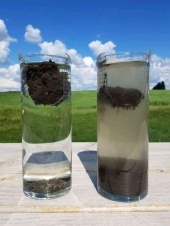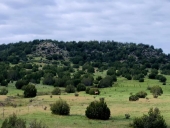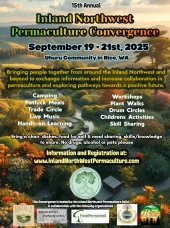




 1
1




Iterations are fine, we don't have to be perfect
My 2nd Location:Florida HardinessZone:10 AHS:10 GDD:8500 Rainfall:2in/mth winter, 8in/mth summer, Soil:Sand pH8 Flat






Iterations are fine, we don't have to be perfect
My 2nd Location:Florida HardinessZone:10 AHS:10 GDD:8500 Rainfall:2in/mth winter, 8in/mth summer, Soil:Sand pH8 Flat
 2
2




james buttler wrote:Wayne for that type of pond you talk about I can’t get my head around it. Is it as simple as just digging a narrow trench at the basin of the pond to a deeper depth that catches the underground water?
![Filename: Screenshot_20180828-005729_Samsung-Internet_crop_570x506.jpg
Description: [Thumbnail for Screenshot_20180828-005729_Samsung-Internet_crop_570x506.jpg]](/t/91644/a/64429/Screenshot_20180828-005729_Samsung-Internet_crop_570x506.jpg)
Sometimes the answer is nothing

 1
1




james buttler wrote:
I’m 25 probably a lot younger than most people starting this kind of endeavour but I want to get some land fully seeded and started before I’m 30 at least. Don’t want to be about to pop before my hard work flourishes.
james buttler wrote:
What’s your opinions on having an alder hedge grown to around 60cm woven for strength and let it grow to 90cm during growing season and then a quick trim to 60cm every autumn after harvesting the fruits inside the guild? This should protect individual guilds from the livestock and provide valuable nitrogen fixation?
 , as I am with growth habits in the hot and dryness of the USA's desert Southwest.
, as I am with growth habits in the hot and dryness of the USA's desert Southwest.
james buttler wrote:
Been doing a bit of drawing on maps trying to get some vision and imagination for the slopes of the land and placements of things whilst I wait for delivery of these books




 2
2




james buttler wrote:Wayne if I dig down to this impermeable layer I don’t understand how this water will be “caught” the pond is impermeable how will the water drain into the pond from below ground? Wouldn’t the water pool in front of the pond underground until it finds a way around my trench at the bottom of the pond?
![Filename: dam.jpg
Description: [Thumbnail for dam.jpg]](/t/91644/a/64458/dam.jpg)
Idle dreamer
 2
2




Sometimes the answer is nothing

 2
2




Sometimes the answer is nothing

 1
1




james buttler wrote:
Mark My initial designs that I’ve imagined would have the entire 100 acres ponds and food forest. Is that a bad idea?
james buttler wrote:Would I need separate pastures or could I grow most veg grains and fruit under the canopy do most trees?
james buttler wrote:Along with having animals free grazing under these trees.
james buttler wrote:Using permaculture principals does it allow the use of technology to mass harvest a field of produce or does it need to be done by hand to keep the land from being eroded? I imagine harvesting a large amount of veg by hand would be extremely time-consuming




![Filename: 08A6D6F8-043E-4B56-AC3F-03864A8AE566.jpeg
Description: [Thumbnail for 08A6D6F8-043E-4B56-AC3F-03864A8AE566.jpeg]](/t/91644/a/64475/08A6D6F8-043E-4B56-AC3F-03864A8AE566.jpeg)







Iterations are fine, we don't have to be perfect
My 2nd Location:Florida HardinessZone:10 AHS:10 GDD:8500 Rainfall:2in/mth winter, 8in/mth summer, Soil:Sand pH8 Flat




Sometimes the answer is nothing

 5
5




 1
1




james buttler wrote:Sorry for the delay my first son was born yesterday morning.

Gardens in my mind never need water
Castles in the air never have a wet basement
Well made buildings are fractal -- equally intelligent design at every level of detail.
Bright sparks remind others that they too can dance
What I am looking for is looking for me too!






List of Bryant RedHawk's Epic Soil Series Threads We love visitors, that's why we live in a secluded cabin deep in the woods. "Buzzard's Roost (Asnikiye Heca) Farm." Promoting permaculture to save our planet.












 1
1




Laboris Gloria Ludi- Work hard play hard




 1
1




 2
2




 2
2




 1
1




james buttler wrote:For permaculture I do have the advantage of being able to buy any type of land right? I don’t need to look for amazing quality grade 3 agricultural land as if the land has been destroyed I can always rebuild it? As long as it hasn’t been severely contaminated that is.
james buttler wrote:Got a few trees here in my garden so I’m gonna give grafting a shot on a few of these and see how it goes. As I think I’ll buy a couple of fruit trees I want now with the fully vigorous rootstocks and clone the rootstock and the fruit tree so I can get many clones in the future.
 1
1




 1
1




james buttler wrote:Mark how many years does the rootstock need to be?
james buttler wrote:I was under the impression they could be grafted at one year. A local nursery selling root stocks here are selling 1-year-old rootstocks. If I have to wait until the rootstocks are several meters tall and then chop them to the ground to graft I may rather look into buying older rootstocks to save some time.
james buttler wrote:although I suppose I could let the rootstock reach 3m and then graft my fruit variety onto the top? I would have thought this could cause issues with branches from the rootstock forming


 2
2




Iterations are fine, we don't have to be perfect
My 2nd Location:Florida HardinessZone:10 AHS:10 GDD:8500 Rainfall:2in/mth winter, 8in/mth summer, Soil:Sand pH8 Flat
 4
4




Laboris Gloria Ludi- Work hard play hard
 2
2




 2
2




james buttler wrote:I’m wanting to buy 100 acres of land and I’m very interested in permaculture principals ive been reading about it constantly for over a year now but never seem to read enough!
$10.00 is a donation. $1,000 is an investment, $1,000,000 is a purchase.
 3
3




 3
3








Argue for your limitations and they are yours forever.








 2
2




Levente Andras wrote:Interestingly, the land had been covered with alfalfa for at least 5 years before I purchased it. You would expect that the deep roots of this legume would have contributed to improving the structure. Not so. All it did was (1) outcompeted grasses and other herbaceous species except dandelion - after each scything, the soil was left literally bald as there was nothing else under the tall alfalfa; it took me 4 years to change that; (2) machine (=tractor) harvesting over the years (2-3 harvests each summer) only contributed to further compaction of the clay soil; (3) the alfalfa attracted a huge population of voles (enemies of trees & shrubs !!!).




Mark Kissinger wrote:
Here are some techniques you might try using livestock and pasture management. The primary takeaway is that the soil is always covered in vegetation. There is no need to roto-till or plow the soil, which disturbs the necessary soil microbes and exposes the soil to the drying influences of the air and sun. The number of animals used is based on the acreage available and the optimum number and type of animals used to perform the grazing operations. Depending on the area involved, you may only need a couple or a single grazing animal to keep your pasture mowed. The timing of the access of the animal is determined by the growth cycle of the forage plants available. In essence, there are no weeds, especially where goats are involved. other livestock animals are more fussy about what they will eat. Hope these will help. With a little further searching, you can find other information that will prove useful.
 1
1




Levente Andras wrote:
Sorry, so far I have failed to see the relevance of the above concept to the establishment of a system where trees are dominant. I may be missing something, could someone point me in the right direction?
How does livestock and pasture management as described by these sources help trees?
Where is the transition from pasture & livestock to trees? How do you move from grasses and bacterial dominance in the soil to trees & shrubs and fungal dominated soil?
Where do you phase out the livestock? Alternatively, after you plant your trees, will you still be grazing on the land? If so, how will you protect the young trees from getting destroyed by browsing animals?
More importantly, how do you de-compact the soil (in my case, heavy clay soil) after the compaction caused by mob grazing?
Etc. etc.

|
One blast from the ray gun turned half a town into a guy named ray. Just like this tiny ad:
Rocket Mass Heater Resources Wiki
https://permies.com/w/rmh-resources
|






